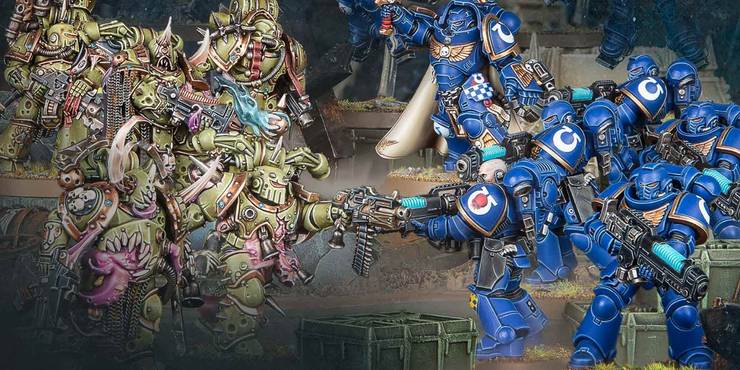Warhammer 40k: Why The ITC Rankings Are Important

In competitive Warhammer 40k, Frontline Gaming and its ITC Rankings are the current standard for ranking players. From its smaller West Coast beginnings as the Independent Tournament Circuit, it has since gone global and is known as the International Tournament Circuit. It tracks thousands of competitive players across the globe in 40k tournaments both large and small. The biggest of these 40k tournaments are called Super Major Events and see 205+ players playing 7+ rounds of Warhammer over a weekend.
The UK’s Games Workshop, the company responsible for Warhammer 40k, has seen massive growth in the last decade. Just during the current pandemic alone it has seen a massive surge in sales. This has also led to a flood of new Warhammer games. Alongside this growth there has been massive growth in the competitive Warhammer 40k scene. This growth has largely been driven by Frontline Gaming and its tournament circuit (with GWs blessing).
The ITC Rankings are a great way for a Warhammer 40k player to measure personal growth. Besides being a global representation of the player pool, players are also ranked by region and by army faction. Example: An Ork player from the East Coast could see how she stacks up against other Ork players or players at large, in region or globally. That said, it’s not just bragging rights that a player can take home for topping the ITC Rankings. The 2019 ITC 40k Champion, Richard Siegler took home $4000 and a ton of Warhammer swag that included a life-size boltgun replica. While it may not quite stack up to the $75,000 prizes available in Fortnite Tournament, it’s a vast improvement from the days of a $25 store voucher and a poorly printed certificate.
How the ITC Helps Warhammer 40k’s Growth

Players going into making the jump to competitive Warhammer 40k should know the ITC has helped standardize Warhammer 40k tournaments. The circuit has helped standardize many things, including game missions (as the 40k Rule Book missions are sometimes unbalanced), and even clarified generally disputed rules on things like terrain. The rankings themselves function by taking a player’s top six ITC sanctioned event scores and adding them together. That score is then compared regionally and globally, at large and by faction. There are four size categories to ITC sanctioned events and the bigger the event, the more that events score is worth. This means that players may have to travel beyond their local game store and circle of friends to chase a bigger tournament score once they make the switch from casual to competitive Warhammer 40k.
It also means game stores have more incentive to hold ITC sanctioned Warhammer 40k tournaments. Smaller stores can benefit from the added foot traffic from outside of their region. Even online, in places like Reddit or YouTube, competitive 40k advice and commentary is a hot commodity. Simply put, 40k is massively growing in popularity, with Witcher star Henry Cavill being one of its more famous fans. It’s clear that the ITC has played a major role in this growth.
The ITC Rankings have done a lot more than give Warhammer 40k players a measuring stick and help local gaming stores. They’ve helped grow the 40k community as a whole. Some players regularly travel to compete in other cities and sometimes to other countries as they chase bigger event scores. The largest competitive Warhammer 40k tournament in the world is the Las Vegas Open. Since its inception, it has seen player attendance from around the globe. These players often keep in contact and form long-lasting friendships based around a shared love of the game.
Source: ITC Rankings, The Guardian

















